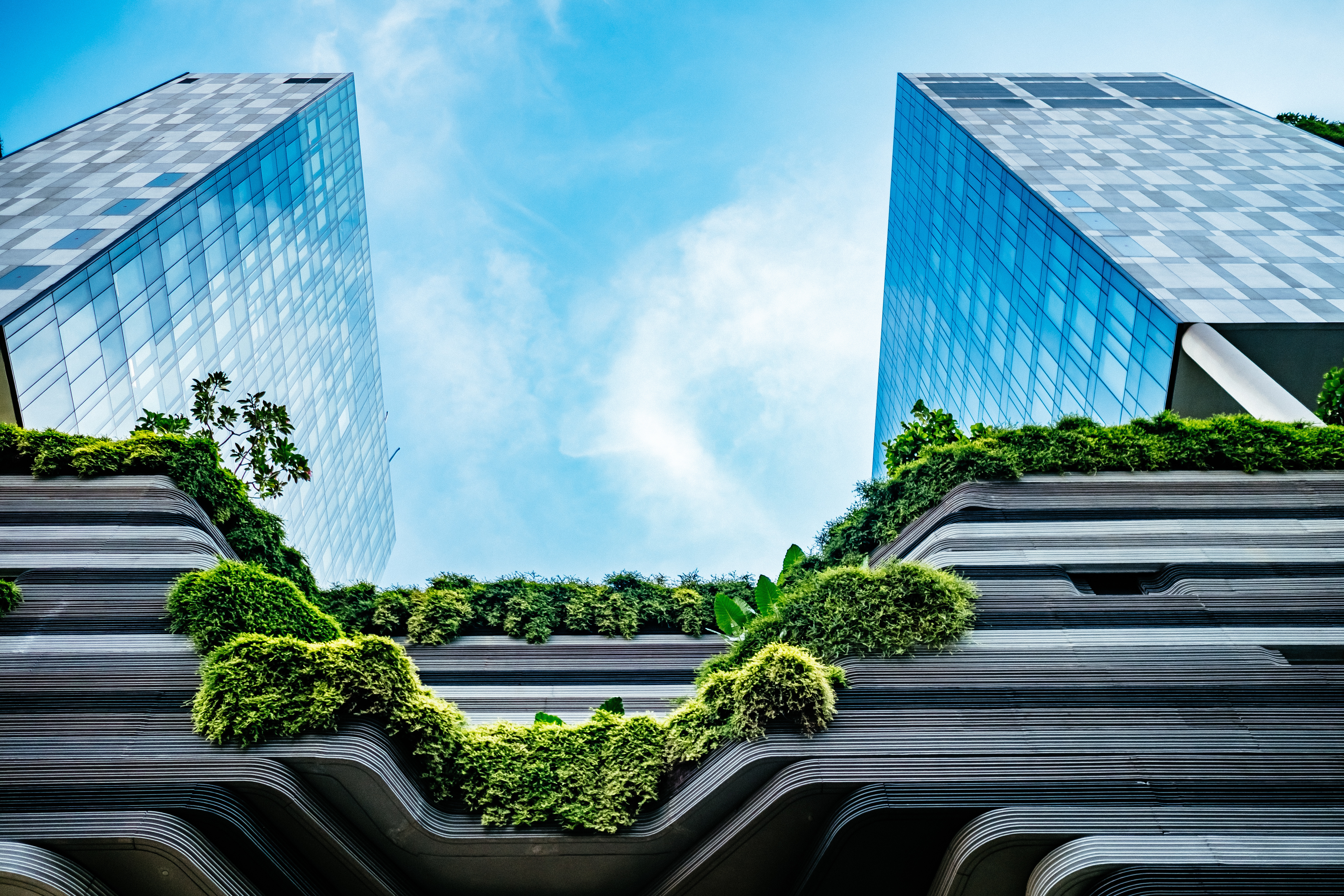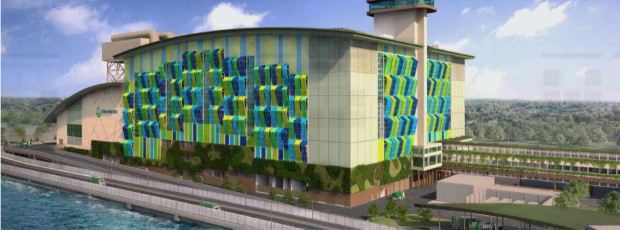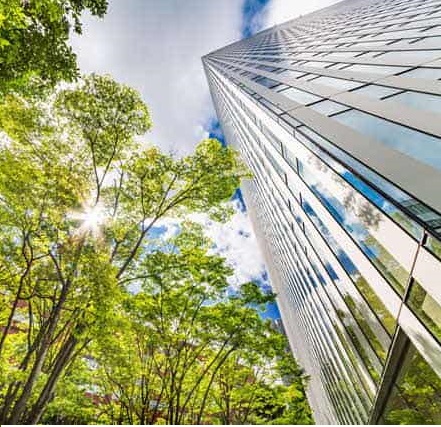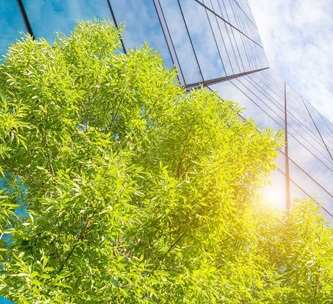Bridging the real estate green financing gap
As the climate crisis rages on, countries around the world are committing to “net-zero” goals to keep the worst effects of global warming at bay. A large part of meeting these targets hinges on the very buildings that we live and work in. By Yulanda Chung, Head of Sustainability, Institutional Banking Group, DBS Bank

Buildings represent 38 per cent of global greenhouse gas emissions, including 28 per cent in operational emissions and 10 per cent in building materials and construction, according to the United Nations (UN) Environment Programme’s 2020 Global Status Report for Buildings and Construction1.
Furthermore, the world’s urban population is set to double by 2050 where nearly seven in 10 people will live in cities2. This is expected to double floor space additions of buildings, especially in developing regions like Asia Pacific – where the addition of 1.2 billion new urban residents3 would lead to further rising emissions, should nothing be done to reduce the carbon footprint of buildings.
But while investments into improving the energy efficiency of buildings have grown – increasing by 3 per cent to US$152 billion in 2019 from the year before – it is still a small fraction of the US$5.8 trillion spent in the building and construction sector4.
To put this into perspective, for every US$1 spent on energy efficiency in the building sector, US$37 is spent on conventional construction approaches.
According to the International Energy Agency (IEA), global investments in energy projects need to more than double from current levels by 2030 in order to meet net-zero emission goals by 2050. Meanwhile, a study by Boston Consulting Group found that the volume of climate financing will have to grow by roughly five to eight times the current amounts issued over the next three decades5.
To close the green building investment gap, there is a need to leverage green finance to accelerate the development of more energy-efficient buildings.
Green finance burgeoning in Asia
The first observation is hopeful: things are improving.
Based on data from the Climate Bonds Initiative, green bond issuances last year might outstrip that of 2020, with US$219.7 billion issued for the first half of the year compared to the US$290.1 billion issued in 2020. Of the green issues issued in the first half of last year, more than a quarter, or US$51.9 billion, were issued from Asia Pacific, just shy of the US$53.2 billion issued for the entire year of 2020.6
In Singapore, green finance forms a part of Singapore’s Green Plan 2030 – the whole-of-nation movement to advance Singapore's national agenda on sustainable development – which includes greening 80 per cent of buildings here by 20307. Last September, Minister of Finance Lawrence Wong also announced the setting up of the Green Bonds Programme Office under the Ministry of Finance, which will work with statutory boards and develop a framework for green bond programmes.8
At DBS, we have taken an active role in catalysing green finance both here and in the region. We have made good progress, committing S$12.4 billion of sustainability-linked loans and S$6.9 billion of green loans in 2021. Cumulatively we have concluded S$39.4 billion in sustainable financing transactions, against our sustainable financing target of S$50 billion by 2024. This was also the second consecutive year that we topped the Asia Pacific (ex-Japan) league table for arranging green and sustainability-linked loans.
On the built environment front, we have observed that green finance products are increasingly being used by a wider spectrum of organisations and not just real estate companies. We now see demand for financing towards green buildings from universities, logistics companies and data centres, to building material producers and contractors.
For instance, DBS was the sole lead manager and bookrunner for the National University of Singapore’s inaugural green bond issuance in 2020, where it raised S$300 million to be channelled towards green projects such as green buildings and precincts as well as renewable energy and energy efficiency infrastructure.9

But we can and should do more – especially when it comes to thinking more creatively about how to use green finance in different ways.
As green finance becomes more mainstream, there will also be a need to develop innovative ways to meet the varying needs of customers. A customer with dedicated capex needs for a certified green building could simply need a green loan. But should they be after a holistic set of changes aiming for a longer-term vision to reach net-zero emissions, a key performance indicator-linked structure would be more suitable.
In 2019, we worked with real estate company City Developments (CDL) to pioneer a three-year revolving credit facility. Under the facility, the company will be eligible for a discount on the interest rate of the loan when it achieves sustainability-related performance targets mutually agreed on with DBS – on innovations that contribute positively to the UN’s Sustainable Development Goals.10
From cutting operational carbon to greening the grid
The next evolution of the green financing strategy involves expanding green considerations when it comes to real estate.
Green financing will increasingly consider the lifecycle impact of a building. This means not just financing new buildings, but also the retrofitting of our existing stock of buildings. To this end, we expect more action to be taken on embodied carbon, the emissions arising from the selection and use of building materials.
But doing so will mean tackling many difficult questions.
For instance, how can we increase the adoption of green building materials such that the premiums attached to their use will come down?
We use a lot of steel, concrete, and glass in Singapore. Can they be produced with fewer natural resources? In 2019, buildings accounted for 55 per cent of global electricity use. How can we green our grid to then green Singapore’s real estate?
Developers, asset owners and investors together with financial institutions and governments will need to tackle these difficult questions together.
And in so doing, they will beat a new path towards sustainability, help close the green financing gap, and build more sustainable urban landscapes for all.
This article was first published in SG Green Issue 14.0
References
- https://globalabc.org/sites/default/files/inline-files/2020%20Buildings%20GSR_FULL%20REPORT.pdf
- https://www.worldbank.org/en/topic/urbandevelopment /overview#1
- https://www.unescap.org/publications/future-asian-and-pacific-cities-2019-transformative-pathways-towards-sustainable-urban
- https://globalabc.org/sites/default/files/inline-files/2020%20Buildings%20GSR_FULL%20REPORT.pdf
- https://www.mas.gov.sg/news/speeches/2021/what-we-need-to-do-to-make-green-finance-work
- https://sbr.com.sg/financial-services-markets-investing/exclusive-in-focus/green-finance-in-apac-grow-amidst-data-and-disclosure-gaps
- https://www.greenplan.gov.sg/key-focus-areas/key-targets
- https://www.straitstimes.com/business/banking/new-office-set-up-to-accelerate-green-bond-efforts-lawrence-wong
- https://news.nus.edu.sg/nus-raises-s300-million-in-its-inaugural-green-bond-issuance/
- https://www.dbs.com/newsroom/CDl_and_DBS_set_ benchmark_on_innovation_focused_financing_for_sustainable _development



